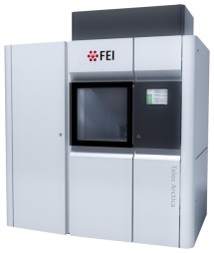+ Open data
Open data
- Basic information
Basic information
| Entry |  | ||||||||||||||||||
|---|---|---|---|---|---|---|---|---|---|---|---|---|---|---|---|---|---|---|---|
| Title | 320 A SynPspA rod after incubation with EPL | ||||||||||||||||||
 Map data Map data | |||||||||||||||||||
 Sample Sample |
| ||||||||||||||||||
 Keywords Keywords | Nucleotide binding / Helical assembly / ESCRT-III fold / Membrane remodeling / LIPID BINDING PROTEIN | ||||||||||||||||||
| Function / homology | PspA/IM30 / PspA/IM30 family / Chloroplast membrane-associated 30 kD protein Function and homology information Function and homology information | ||||||||||||||||||
| Biological species |  | ||||||||||||||||||
| Method | helical reconstruction / cryo EM / Resolution: 5.2 Å | ||||||||||||||||||
 Authors Authors | Hudina E / Junglas B / Sachse C | ||||||||||||||||||
| Funding support |  Germany, 5 items Germany, 5 items
| ||||||||||||||||||
 Citation Citation |  Journal: Proc Natl Acad Sci U S A / Year: 2025 Journal: Proc Natl Acad Sci U S A / Year: 2025Title: The bacterial ESCRT-III PspA rods thin lipid tubules and increase membrane curvature through helix α0 interactions. Authors: Esther Hudina / Stephan Schott-Verdugo / Benedikt Junglas / Mirka Kutzner / Ilona Ritter / Nadja Hellmann / Dirk Schneider / Holger Gohlke / Carsten Sachse /  Abstract: The phage shock protein A (PspA), a bacterial member of the endosomal sorting complexes required for transport (ESCRT)-III superfamily, forms rod-shaped helical assemblies that internalize membrane ...The phage shock protein A (PspA), a bacterial member of the endosomal sorting complexes required for transport (ESCRT)-III superfamily, forms rod-shaped helical assemblies that internalize membrane tubules. The N-terminal helix α0 of PspA (and other ESCRT-III members) has been suggested to act as a membrane anchor; the detailed mechanism, however, of how it binds to membranes and eventually triggers membrane fusion and/or fission events remains unclear. By solving a total of 15 cryoelectron microscopy (cryo-EM) structures of PspA and a truncation lacking the N-terminal helix α0 in the presence of polar lipid membranes, we show in molecular detail how PspA interacts with and remodels membranes: Binding of the N-terminal helix α0 in the outer tubular membrane leaflet induces membrane curvature, supporting membrane tubulation by PspA. Detailed molecular dynamics simulations and free energy computations of interactions between the helix α0 and negatively charged membranes suggest a compensating mechanism between helix-membrane interactions and the energy contributions required for membrane bending. The energetic considerations are in line with the membrane structures observed in the cryo-EM images of tubulated membrane vesicles, fragmented vesicles inside tapered PspA rods, and shedded vesicles emerging at the thinner PspA rod ends. Our results provide insights into the molecular determinants and a potential mechanism of vesicular membrane remodeling mediated by a member of the ESCRT-III superfamily. | ||||||||||||||||||
| History |
|
- Structure visualization
Structure visualization
| Supplemental images |
|---|
- Downloads & links
Downloads & links
-EMDB archive
| Map data |  emd_52540.map.gz emd_52540.map.gz | 16.3 MB |  EMDB map data format EMDB map data format | |
|---|---|---|---|---|
| Header (meta data) |  emd-52540-v30.xml emd-52540-v30.xml emd-52540.xml emd-52540.xml | 16.4 KB 16.4 KB | Display Display |  EMDB header EMDB header |
| FSC (resolution estimation) |  emd_52540_fsc.xml emd_52540_fsc.xml | 13.3 KB | Display |  FSC data file FSC data file |
| Images |  emd_52540.png emd_52540.png | 50.1 KB | ||
| Filedesc metadata |  emd-52540.cif.gz emd-52540.cif.gz | 5.6 KB | ||
| Others |  emd_52540_half_map_1.map.gz emd_52540_half_map_1.map.gz emd_52540_half_map_2.map.gz emd_52540_half_map_2.map.gz | 224.4 MB 224.4 MB | ||
| Archive directory |  http://ftp.pdbj.org/pub/emdb/structures/EMD-52540 http://ftp.pdbj.org/pub/emdb/structures/EMD-52540 ftp://ftp.pdbj.org/pub/emdb/structures/EMD-52540 ftp://ftp.pdbj.org/pub/emdb/structures/EMD-52540 | HTTPS FTP |
-Validation report
| Summary document |  emd_52540_validation.pdf.gz emd_52540_validation.pdf.gz | 901.7 KB | Display |  EMDB validaton report EMDB validaton report |
|---|---|---|---|---|
| Full document |  emd_52540_full_validation.pdf.gz emd_52540_full_validation.pdf.gz | 901.3 KB | Display | |
| Data in XML |  emd_52540_validation.xml.gz emd_52540_validation.xml.gz | 22.1 KB | Display | |
| Data in CIF |  emd_52540_validation.cif.gz emd_52540_validation.cif.gz | 28.9 KB | Display | |
| Arichive directory |  https://ftp.pdbj.org/pub/emdb/validation_reports/EMD-52540 https://ftp.pdbj.org/pub/emdb/validation_reports/EMD-52540 ftp://ftp.pdbj.org/pub/emdb/validation_reports/EMD-52540 ftp://ftp.pdbj.org/pub/emdb/validation_reports/EMD-52540 | HTTPS FTP |
-Related structure data
| Related structure data |  9i00MC  9hzmC  9hznC  9hzoC  9hzpC  9hzqC  9hzrC  9hzsC  9hztC  9hzuC  9hzvC  9hzwC  9hzxC  9hzyC  9hzzC  9i01C  15508 M: atomic model generated by this map C: citing same article ( |
|---|---|
| Similar structure data | Similarity search - Function & homology  F&H Search F&H Search |
- Links
Links
| EMDB pages |  EMDB (EBI/PDBe) / EMDB (EBI/PDBe) /  EMDataResource EMDataResource |
|---|
- Map
Map
| File |  Download / File: emd_52540.map.gz / Format: CCP4 / Size: 244.1 MB / Type: IMAGE STORED AS FLOATING POINT NUMBER (4 BYTES) Download / File: emd_52540.map.gz / Format: CCP4 / Size: 244.1 MB / Type: IMAGE STORED AS FLOATING POINT NUMBER (4 BYTES) | ||||||||||||||||||||||||||||||||||||
|---|---|---|---|---|---|---|---|---|---|---|---|---|---|---|---|---|---|---|---|---|---|---|---|---|---|---|---|---|---|---|---|---|---|---|---|---|---|
| Projections & slices | Image control
Images are generated by Spider. | ||||||||||||||||||||||||||||||||||||
| Voxel size | X=Y=Z: 1.36 Å | ||||||||||||||||||||||||||||||||||||
| Density |
| ||||||||||||||||||||||||||||||||||||
| Symmetry | Space group: 1 | ||||||||||||||||||||||||||||||||||||
| Details | EMDB XML:
|
-Supplemental data
-Half map: #1
| File | emd_52540_half_map_1.map | ||||||||||||
|---|---|---|---|---|---|---|---|---|---|---|---|---|---|
| Projections & Slices |
| ||||||||||||
| Density Histograms |
-Half map: #2
| File | emd_52540_half_map_2.map | ||||||||||||
|---|---|---|---|---|---|---|---|---|---|---|---|---|---|
| Projections & Slices |
| ||||||||||||
| Density Histograms |
- Sample components
Sample components
-Entire : Helical assembly of SynPspA after incubation with EPL
| Entire | Name: Helical assembly of SynPspA after incubation with EPL |
|---|---|
| Components |
|
-Supramolecule #1: Helical assembly of SynPspA after incubation with EPL
| Supramolecule | Name: Helical assembly of SynPspA after incubation with EPL / type: complex / ID: 1 / Parent: 0 / Macromolecule list: all |
|---|---|
| Source (natural) | Organism:  |
| Molecular weight | Theoretical: 1.7 MDa |
-Macromolecule #1: Chloroplast membrane-associated 30 kD protein
| Macromolecule | Name: Chloroplast membrane-associated 30 kD protein / type: protein_or_peptide / ID: 1 / Number of copies: 60 / Enantiomer: LEVO |
|---|---|
| Source (natural) | Organism:  |
| Molecular weight | Theoretical: 28.097758 KDa |
| Recombinant expression | Organism:  |
| Sequence | String: MGSSHHHHHH SSSAALEVLF QGPMELFNRV GRVLKSQLTH WQQQQEAPED LLERLLGEME LELIELRRAL AQTIATFKST ERQRDAQQL IAQRWYEKAQ AALDRGNEQL AREALGQRQS YQSHTEALGK SLGEQRALVE QVRGQLQKLE RKYLELKSQK N LYLARLKS ...String: MGSSHHHHHH SSSAALEVLF QGPMELFNRV GRVLKSQLTH WQQQQEAPED LLERLLGEME LELIELRRAL AQTIATFKST ERQRDAQQL IAQRWYEKAQ AALDRGNEQL AREALGQRQS YQSHTEALGK SLGEQRALVE QVRGQLQKLE RKYLELKSQK N LYLARLKS AIAAQKIEEI AGNLDNASAS SLFERIETKI LELEAERELL NPPPSPLDKK FEQWEEQQAV EATLAAMKAR RS LPPPSS UniProtKB: Chloroplast membrane-associated 30 kD protein |
-Experimental details
-Structure determination
| Method | cryo EM |
|---|---|
 Processing Processing | helical reconstruction |
| Aggregation state | helical array |
- Sample preparation
Sample preparation
| Buffer | pH: 8 |
|---|---|
| Vitrification | Cryogen name: ETHANE |
- Electron microscopy
Electron microscopy
| Microscope | FEI TALOS ARCTICA |
|---|---|
| Image recording | Film or detector model: GATAN K3 BIOQUANTUM (6k x 4k) / Average electron dose: 44.0 e/Å2 |
| Electron beam | Acceleration voltage: 200 kV / Electron source:  FIELD EMISSION GUN FIELD EMISSION GUN |
| Electron optics | Illumination mode: FLOOD BEAM / Imaging mode: BRIGHT FIELD / Nominal defocus max: 3.5 µm / Nominal defocus min: 1.0 µm |
| Experimental equipment |  Model: Talos Arctica / Image courtesy: FEI Company |
 Movie
Movie Controller
Controller



















 Z (Sec.)
Z (Sec.) Y (Row.)
Y (Row.) X (Col.)
X (Col.)






































